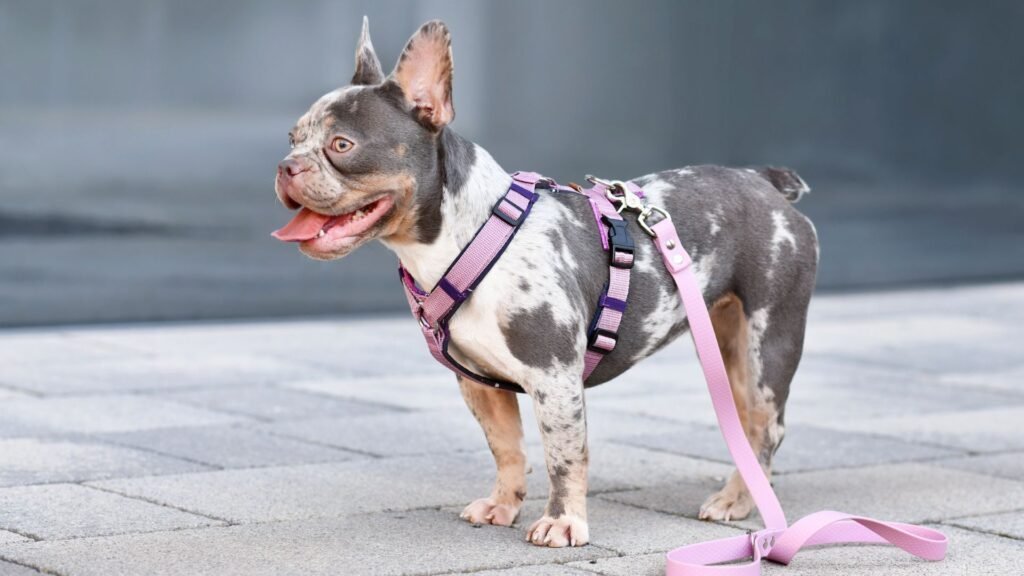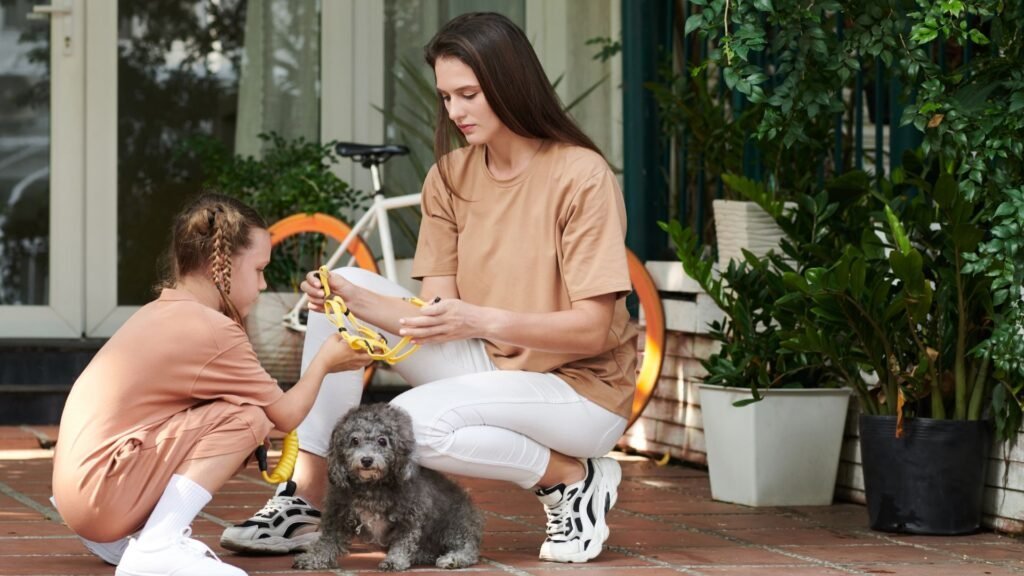Taking your dog on a walk should feel easy, but that’s not always the case when pulling becomes a daily struggle. Many pet owners turn to the Easy Walk harness because it offers a reliable solution without causing discomfort. As a popular no-pull option, this dog harness gently steers your dog to the side whenever they lunge forward, which helps reduce pulling without putting pressure on the throat. However, fitting the harness can feel confusing at first, especially if you have never used anything beyond a standard collar. There’s often a learning curve involved, and if the straps don’t sit right, it can make the entire experience frustrating for both you and your dog. That’s why understanding how to put it on correctly from the start makes such a difference. Once the harness fits the right way, you gain better control on walks, and your dog feels more comfortable every step of the way.
- What Is an Easy Walk Harness?
- When and Why to Use an Easy Walk Harness
- Step-by-Step Guide to Putting On an Easy Walk Harness
- Step 1 – Identify the Harness Parts
- Step 2 – Adjust the Fit Before Putting It On
- Step 3 – Slide Over the Dog’s Head
- Step 4 – Buckle the Belly Strap
- Step 5 – Attach the Leash to the Chest Ring
- Step 6 – Check for Comfort and Fit
- Mistakes You Should Avoid
- How To Train Your Dog to Wear the Easy Walk Harness Without Getting Stressed Out
- Wrapping Up…
What Is an Easy Walk Harness?
An Easy Walk harness is a front clip dog harness that gently guides your dog without causing strain on the neck. Unlike back-clip versions or standard collars, this design attaches at the chest, which redirects forward momentum and helps manage pulling.
One of the key Easy Walk harness features is the simple yet effective structure that gives you (the pet owner) better control without discomfort to your dog. Many trainers recommend it due to the no pull harness benefits that show up quickly in most dogs.
The unique front clip system teaches dogs to walk by your side rather than pulling ahead, which brings enormous benefits over traditional collars that often cause more harm than good. When used the right way, this harness not only makes walks smoother but also strengthens the bond between you and your dog.
- Reduce choking risks
- Better control during walks
- Helps correct pulling habits
- Easy to adjust and use
- Comfortable for most dogs
- Encouraged by dog trainers
When and Why to Use an Easy Walk Harness
Leash training can feel overwhelming at first, especially when your dog pulls with every step. An unfit harness only adds to the struggle and turns each walk into something frustrating to deal with.
In some cases, your dog could escape if the harness slips or loosens during movement, which makes the right fit and design even more critical. That is when to use Easy Walk harness models that offer security and control without discomfort. This type stands out as the best harness for pulling dogs because it helps correct habits gently without causing harm.
It suits both new dog owners and those who want more comfort and safety during walks. Recommended by vets and trainers for its practical benefits, the Easy Walk harness supports smoother walks while reducing tension for both dog and owner. When leash control matters, having the right harness on your dog makes all the difference.
Step-by-Step Guide to Putting On an Easy Walk Harness

Step 1 – Identify the Harness Parts
Before you try to put on dog harness gear like this, make sure you understand what each strap does. The Easy Walk dog harness includes a shoulder strap, chest strap, belly strap, and a front-facing d-ring. The shoulder strap is the top strap that should rest across the dog’s shoulders. You will notice two O-rings on the shoulder strap, and they should rest above and behind your dog’s shoulders once the harness is secured. The chest strap passes over the front of the dog and connects to the Martingale loop. This loop rests on the chest instead of the spine and plays a key role in guiding movement. Lastly, the belly strap rests on the belly and runs behind the front legs, wrapping around the dog’s girth.
Step 2 – Adjust the Fit Before Putting It On
It helps to adjust the easy walk dog harness before you place it over your dog. Lay it flat and untangle the straps to make sure each part lines up properly. Adjust the shoulder strap to match your dog’s size so it rests across the dog’s shoulders without drooping. Check the chest strap and adjust the loop so the Martingale loop stays at the center of the chest. You must fit the chest area so that it sits flat and does not twist. Besides, adjust the belly strap so it can rest comfortably around the dog behind the front legs. Avoid over-tightening, but do not leave it loose either. The goal is to allow a snug fit without pinching the armpit area.
Step 3 – Slide Over the Dog’s Head
Once the dog harness matches your dog’s proportions, you can slide the harness gently over the head. Keep the shoulder strap on top and guide the chest strap to the front. Your dog may move or resist, so stay calm and speak gently to help them stay still. As you place the easy walk dog harness, make sure the loop on the chest strap remains centered. Slip the harness over slowly and ensure no strap twists along the way. If anything seems off, remove it and start again rather than forcing it into position.
Step 4 – Buckle the Belly Strap
After you place the dog harness over your dog’s head, reach underneath and bring the belly strap around the dog’s girth. Connect it to the side buckle, making sure it rests behind the front legs without slipping into the armpit area. This is the step that secures the harness, so check that it buckles cleanly and does not pinch any fur. The belly strap must rest snugly across the ribcage without pressing too tight. You should feel the strap sit firm but still allow movement.
Step 5 – Attach the Leash to the Chest Ring
Once the harness sits flat across all key points, you can attach the leash to the d-ring located on the front Martingale loop. This front placement is what turns the Easy Walk into a no-pull option. When your dog tries to pull ahead, the leash pressure directs them to the side instead. This helps redirect their focus and teaches calm walking behavior. Clip the leash to the d-ring and hold it gently to test how it moves with your dog’s steps.
Step 6 – Check for Comfort and Fit
Before heading out, you must check that every part fits well. Use the Two-finger test by sliding two fingers under each strap. If they pass without squeezing tight or feeling loose, the fit is correct. The chest strap should sit across the chest and not ride up toward the neck. A well-fitted harness supports better behavior and avoids discomfort over time.
Mistakes You Should Avoid
- Putting the harness on upside-down
- Incorrect strap adjustment
- Using the wrong leash clip
- Rushing the process with an anxious dog
How To Train Your Dog to Wear the Easy Walk Harness Without Getting Stressed Out

- Positive reinforcement: Use calm words and a gentle voice each time you handle the harness. Let your dog explore it with their nose before you even attempt to put it on. Reward curiosity and patience so your dog connects the harness with safety and care.
- Gradual introduction: Place the easy walk harness near your dog’s toys and bedding so it feels like a normal part of their space. Pick it up occasionally and let them watch. Touch their body where the harness will go so they get used to the handling.
- Using treats and praise: Offer a few treats and speak with affection while you place the harness. This tells your dog they did something right. Praise helps your dog feel secure and builds trust.
- Short walk practice: Start with a quick walk around your yard. Use the step-in harness and let them move freely while staying close. Over time, longer walks will feel natural.
Wrapping Up…
Putting a walk harness on your dog may seem tricky at first, but with the right steps, it becomes a smooth and stress-free part of your routine. The Easy Walk harness offers better control and comfort, especially for dogs that pull. From learning how to fit each strap to using positive reinforcement during training, every step plays a role in creating safer and more enjoyable walks. With patience and care, you can properly put on a dog harness without confusion or stress. Once your dog feels secure and calm, each walk turns into a moment both of you look forward to.